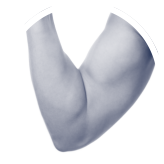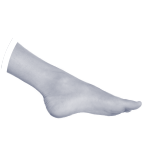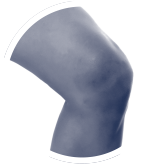
Introduction
Skiing, with its exhilarating descents and challenging terrains, can sometimes lead to unfortunate accidents, resulting in complex, multi-ligament knee injuries, and often meniscal tears too. These injuries pose a unique set of challenges, requiring a comprehensive approach for successful surgical management.
In this article, we delve into the intricacies of such injuries and explore best practices in surgical intervention.
Knee Anatomy
The knee is a complex joint connecting the thigh bone (femur) to the shinbone (tibia). It’s a hinge joint and is a crucial lower limb joint for stability and mobility. Central to its function are four main ligaments: the anterior cruciate ligament (ACL), posterior cruciate ligament (PCL), medial collateral ligament (MCL), and lateral collateral ligament (LCL).
These ligaments work in tandem to provide stability, limiting excessive movement and preventing dislocation.
Additionally, the knee houses two C-shaped wedges of cartilage known as the menisci—medial and lateral. These structures act as shock absorbers, distributing weight and minimising friction between the bones.
The menisci play an important role in maintaining joint health and functionality, contributing to the knee’s ability to cope with high level, dynamic activities and movements.
Complex, Multi-Ligament Knee Injuries in Skiing
Complex, multi-ligament knee injuries involve damage to more than one ligament in the knee joint. In skiing, high-impact falls or awkward landings can lead to a combination of injuries, most commonly affecting the ACL and the MCL, however PCL or LCL can also be affected. When multi ligament injury is combined with a meniscal tear, these injuries present a multifaceted challenge that demands a thorough assessment by a highly skilled orthopaedic knee specialist and tailored treatment plan, which will more than likely involve surgery.
Mechanism of Injury
The knee relies on the harmonious interaction of ligaments for stability during movement. Skiing, with its dynamic and high-impact nature, poses a significant risk of ligament injuries.
The mechanism of injury often involves abrupt changes in direction, sudden stops, or awkward landings that can place excessive stress on the knee joint. The anterior cruciate ligament (ACL) is particularly at risk during skiing, when a skier twists the knee while the foot is still planted, causing a hyperextension or hyperflexion.
The menisci are also vulnerable to twisting forces and compressive stresses. In skiing, meniscal tears usually occur from the combination of rapid directional changes or twisting, often during a nasty fall on uneven terrain. Meniscal tears exacerbate the complexity of multi-ligament injuries, requiring careful consideration during the surgical planning process.
Risk Factors
Participation in skiing, especially in demanding terrains or at high speeds, increases the risk of multi-ligament knee injuries. Factors such as improper technique, inadequate equipment, and environmental conditions contribute to the likelihood of sustaining these complex injuries. Additionally, pre-existing knee conditions or previous injuries may add to your susceptibility.
Technique and Skill Level
Skiers with inadequate technique or those attempting slopes beyond their skill level are at a higher risk of knee ligament injuries. Poor skiing form, improper weight distribution, and an inability to execute turns effectively can increase the likelihood of placing excessive stress on the ligaments during manoeuvres. Having a few lessons while you are away is the best way to improve your technique, especially if you are a beginner or if you haven’t skied for a few years.
Terrain and Conditions
The nature of the skiing terrain plays a significant role in the risk of knee ligament injuries. Icy or uneven surfaces, moguls, and challenging slopes can contribute to unexpected falls or sudden changes in direction, increasing the strain on the knee ligaments. Make sure that you ski within your ability limits; while it’s good to push yourself, it might be worth having some tuition if you are wanting to upskill to more challenging slopes or terrain.
Equipment and Binding Settings
Ill-fitted or improperly adjusted ski equipment, including boots and bindings, can increase the risk of ligament injuries. Having the binding release settings set too high may lead to an increased susceptibility to twisting or hyperextension injuries. It’s important to get advice from a reputable boot and ski fitter to make sure that you are using the correct equipment for your height and weight, and skiing ability.
Muscle Fatigue and Conditioning
Fatigue, especially in the muscles supporting the knee joint, can compromise a skiers’ ability to maintain proper form and control. Weakened muscles are less effective in providing stability, making skiers more vulnerable to ligament injuries, particularly during long skiing days. Injuries often occur towards the end of the day, make sure you take it steady, and don’t push it if you are feeling tired.
Previous Injuries and Joint Instability
Individuals with a history of knee injuries, including ligament sprains or tears, are at a higher risk of re-injury. Residual joint instability from prior incidents can compromise the overall integrity of the knee, making it more susceptible to ligament damage during subsequent skiing activities.
Age and Fitness Level
Age-related factors and overall fitness level play a role in the risk of knee ligament injuries in skiing. Older individuals may have reduced joint flexibility and muscle strength, while inadequate physical conditioning can contribute to compromised joint stability, increasing the likelihood of ligament injuries.
Symptoms of Ligament and Meniscal Injuries
Skiers may experience knee symptoms such as:
- Pain
- Swelling
- Limited range of motion – often due to pain and swelling
- A feeling of instability or giving way – although excessive knee swelling may mask this
- Patients may describe hearing a pop
- If the meniscus is damaged there may also be a clicking or catching/locking sensation in the knee.
It’s important to note that symptoms can differ depending on whether it is an acute injury, or one that is a few weeks old.
Diagnosis of Ligament and Meniscal Injuries
-
Accurate Diagnosis
- The first step in managing complex knee injuries is obtaining a precise diagnosis; accurate diagnosis is paramount for effective surgical management.
- Advanced imaging techniques, including magnetic resonance imaging (MRI), provide detailed insights into the extent and specific locations of ligament damage and meniscal tears. A thorough clinical evaluation, including a detailed history and physical examination, together with x-rays and MRI images are the gold standard for diagnosing these knee conditions, and helping to determine the best surgical approach.
Best Practice Surgical Management
Multi-Ligament Reconstruction
Multi-ligament reconstruction surgery is a specialised orthopaedic procedure undertaken to address severe injuries involving damage to more than one of the knee ligaments. This complex surgery aims to restore stability and function to the knee by reconstructing damaged ligaments using grafts from either autografts (patient’s own tissues) or allografts (donor tissues).
The surgery is intricate and requires a skilled orthopaedic surgeon experienced in managing multiple ligament injuries.
Successful outcomes depend on various factors, including the extent of the injury, the timing of the surgery, and the patient’s commitment to rehabilitation.
Meniscal Repair or Resection
Depending on your diagnosis, this may be a stand alone treatment, or you may need this alongside ligament reconstruction. The approach to meniscal tears varies based on the tear’s location, type, and extent. In a number of cases, a meniscal repair is the optimal procedure, as it preserves the meniscus as much as possible.
In other instances, where repair is not feasible, a partial meniscectomy may be performed to remove the damaged portion.
Meniscal Transplant (meniscal allograft transplantation (MAT).
Allograft tissue comes from a human donor. For this procedure, providers use a meniscus from a cadaver (deceased donor).
This procedure is highly complex, and there are only a limited number of surgeons in the UK (and worldwide) who can perform this type of operation. A meniscal transplant can only be carried out if:
- You’re younger than age 55.
- You have activity related knee pain.
- You’re missing more than half your meniscus, or you have a large meniscus tear that is irreparable.
- You have no or only minimal arthritis.
- You have a knee with normal alignment.
- You have stable, intact knee ligaments.
- You are not overweight.
Individualised Treatment Plans
Each complex knee injury patient is unique, and surgical management should be tailored to the specific needs of the individual. Surgeons must consider the patient’s age, activity level, and the nature of the injury to develop a personalised treatment plan that optimises both short-term recovery and long-term joint health.
Despite the complexity and rehabilitation challenges, surgery can provide significant pain relief, improved joint stability, and enhanced overall knee function for appropriately selected individuals.
Postoperative Rehabilitation
Postoperative rehabilitation is intensive, involving a carefully structured program to regain range of motion, strength, joint stability and high level function.
Patients are typically required to use crutches initially, and in some cases (such as with meniscal transplants) they may also need to wear a knee brace to limit knee movement and allow the tissues to rest and heal. This is followed by a progressive increase in weight-bearing activities and range of motion exercises.
Full recovery may take several months to a year, and the success of the surgery is influenced by factors such as the extent of the injury, patient compliance with rehabilitation and the condition of the surrounding joint.
Comprehensive postoperative rehabilitation is essential for a successful recovery. Physiotherapy focuses on restoring range of motion, strengthening the muscles around the knee, and gradually reintroducing weight-bearing activities. Close collaboration between the surgeon and the physiotherapist is crucial to monitor progress and adjust the rehabilitation plan as needed.
At London Bridge Hospital we have long standing, close working relationships with some of the best Physiotherapists in London, and we will ensure that you are given the best possible care.
Long-Term Monitoring
Patients who undergo surgery for complex knee injuries with meniscal tears should undergo long-term monitoring to assess the success of the intervention and address any potential complications. Regular follow-ups with the orthopaedic surgeon and periodic imaging can help track joint health and functionality over time.
Conclusion
Complex, multi-ligament, and meniscal knee injuries present a formidable challenge in the realm of skiing-related injuries. Surgical management, guided by accurate diagnosis and a personalised treatment plan, offers a pathway to recovery.
By combining advanced surgical techniques with thoughtful rehabilitation strategies, orthopaedic surgeons aim to restore not only the structural integrity of the knee but also the confidence and mobility of individuals passionate about returning to the slopes. As technology and surgical approaches continue to evolve, the outlook for those facing such injuries in the skiing community becomes increasingly promising.
Why Choose London Bridge Orthopaedics
London Bridge Orthopaedics is a leading Orthopaedic clinic, based in our outstanding headquarters at The Shard. We work in partnership with one of the largest and most respected private hospitals in the United Kingdom; London Bridge Hospital, and so have access to the most comprehensive, state-of-the-art imaging and surgical facilities.
Our Knee Consultants are highly specialised, and some of the best orthopaedic surgeons in the country.
They are all specialist orthopaedic consultants who work at large NHS London teaching hospitals, and are used to treating the most complex and unusual knee cases.
We provide the highest quality of surgical and non-surgical care to adult patients with the whole spectrum of orthopaedic knee complaints.
If you would like to book an appointment with any of our Knee Surgeons please call our booking line on 020 3576 5296 or fill out a booking request form.
You can also book via individual consultant’s medical secretaries by going to their profile pages.









